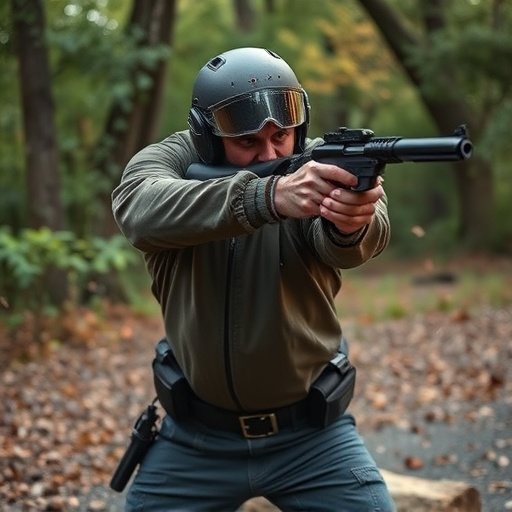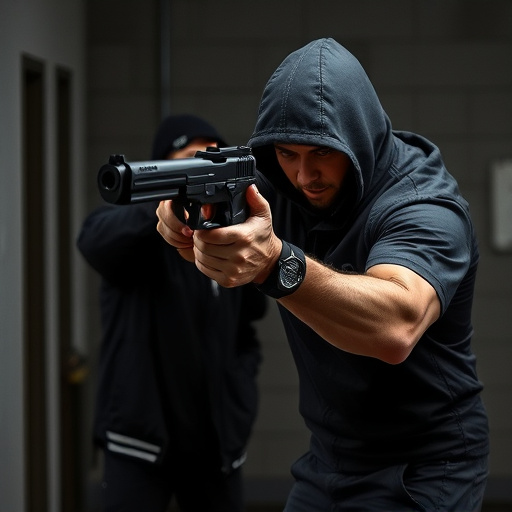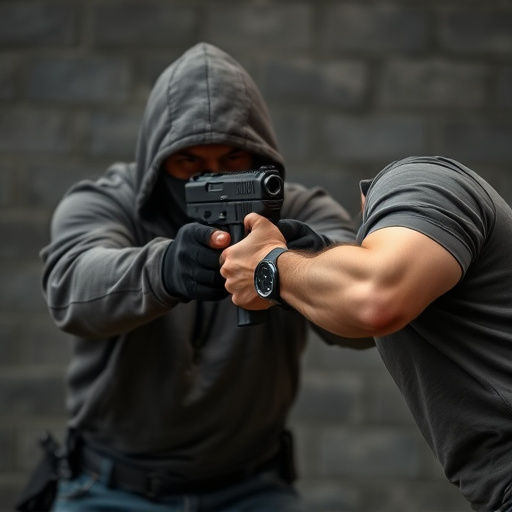Wholesale stun guns for security companies utilize electrical pulse frequencies (EPF) between 15,000 Hz and 40,000 Hz+ to immobilize targets by disrupting neuromuscular systems. Higher EPF results in quicker, stronger shocks that penetrate deeper, making them ideal for swift action scenarios. Security professionals select stun guns with adjustable settings based on target size and resistance. Rechargeable lithium-ion batteries provide precise tuning, while advanced circuitry design enhances performance. Key features include long reach, high voltage output, compact design, and safety/reliability.
“Uncover the power behind stun guns with our guide on electrical pulse frequency. In the world of safety equipment, wholesale stun guns for security companies are a game-changer. ‘Understanding Electrical Pulse Frequency: The Basics’ dives into the fundamental concept, while ‘How Stun Guns Utilize Pulse Frequency’ explores their working mechanism. ‘Factors Influencing Pulse Frequency’ reveals key considerations, and ‘Selecting the Right Stun Gun’ guides security companies in making informed choices. Navigate this powerful technology with our comprehensive insights.”
- Understanding Electrical Pulse Frequency: The Basics
- How Stun Guns Utilize Pulse Frequency
- Factors Influencing Pulse Frequency in Wholesale Stun Guns
- Selecting the Right Stun Gun: Considerations for Security Companies
Understanding Electrical Pulse Frequency: The Basics

Electrical pulse frequency in stun guns refers to the number of electrical pulses delivered per second, measured in hertz (Hz). This crucial factor determines the intensity and effectiveness of the stun gun’s shock. Wholesale stun guns for security companies often prioritize higher pulse frequencies, typically ranging from 15,000 Hz to 40,000 Hz or more, to ensure robust performance.
Understanding this concept is essential as it directly impacts how quickly and profoundly the device disrupts muscle control, rendering the target immobilized. Higher frequencies result in quicker and stronger shocks, making them ideal for security applications where swift action is critical. This knowledge allows professionals to choose stun guns that match specific needs, enhancing safety and effectiveness in high-risk scenarios.
How Stun Guns Utilize Pulse Frequency

Stun guns utilize electrical pulse frequency as their primary mechanism to incapacitate targets, making them a popular choice for security professionals seeking non-lethal force options. The devices emit a series of high-voltage, low-current electrical pulses that disrupt the target’s neuromuscular system, causing muscular spasms and temporary paralysis. This disruption is achieved through a specific pulse frequency, typically measured in kilohertz (kHz). Wholesale stun guns for security companies often feature adjustable settings, allowing users to select the optimal pulse frequency based on various factors, including the target’s size, strength, and resistance to electric shock.
The effectiveness of a stun gun depends heavily on its pulse frequency. Higher frequencies can penetrate deeper into the body, reaching nerve fibers more efficiently, while lower frequencies may not produce the same level of disruption. Security professionals must consider the nature of their duties when choosing stun guns with specific pulse frequencies to ensure they have the right tool for the job. In many cases, understanding the electrical pulse frequency and how it interacts with the human body is key to making informed decisions about deploying stun guns in high-risk security scenarios.
Factors Influencing Pulse Frequency in Wholesale Stun Guns

The pulse frequency in wholesale stun guns is a critical factor, influenced by several key elements. One primary consideration is the intended use; security companies often require stun guns with higher pulse frequencies to ensure effective immobilization of targets, especially in dynamic and unpredictable scenarios. This need drives manufacturers to develop advanced technologies that can deliver precise, high-intensity electrical pulses.
Additionally, power sources play a significant role in frequency determination. Rechargeable lithium-ion batteries, commonly used in modern stun guns, offer adjustable voltage outputs, allowing for fine-tuned pulse frequencies. The design and quality of the circuitry also impact frequency; more sophisticated circuits can generate faster and more consistent pulses, enhancing performance for security professionals equipped with wholesale stun guns.
Selecting the Right Stun Gun: Considerations for Security Companies

When selecting a stun gun, especially in the context of wholesale stun guns for security companies, it’s crucial to consider the electrical pulse frequency (EPF). EPF is a critical factor as it determines the intensity and effectiveness of the stun. Higher frequencies can penetrate clothing more efficiently, ensuring a stronger stun. Security professionals should look for weapons with frequencies ranging from 100,000 to 400,000 Hz for optimal performance.
Additionally, the delivery system and the type of current (AC or DC) matter. Some models use electric fields, while others rely on electrical arcs. AC current is generally preferred due to its ability to disrupt muscle control. Features like a long reach, high voltage output, and a compact design are also advantageous for security personnel. Ensuring the stun gun meets industry standards for safety and reliability is essential to maintaining a secure environment.
In conclusion, understanding electrical pulse frequency is pivotal for selecting effective wholesale stun guns for security companies. The right pulse frequency ensures optimal stun performance and user safety. By considering factors like voltage, current, and pulse width, security professionals can make informed choices to meet their specific needs. When equipped with the knowledge of different pulse frequencies, these companies can enhance their tactical capabilities, ensuring a swift and reliable response in various situations.
